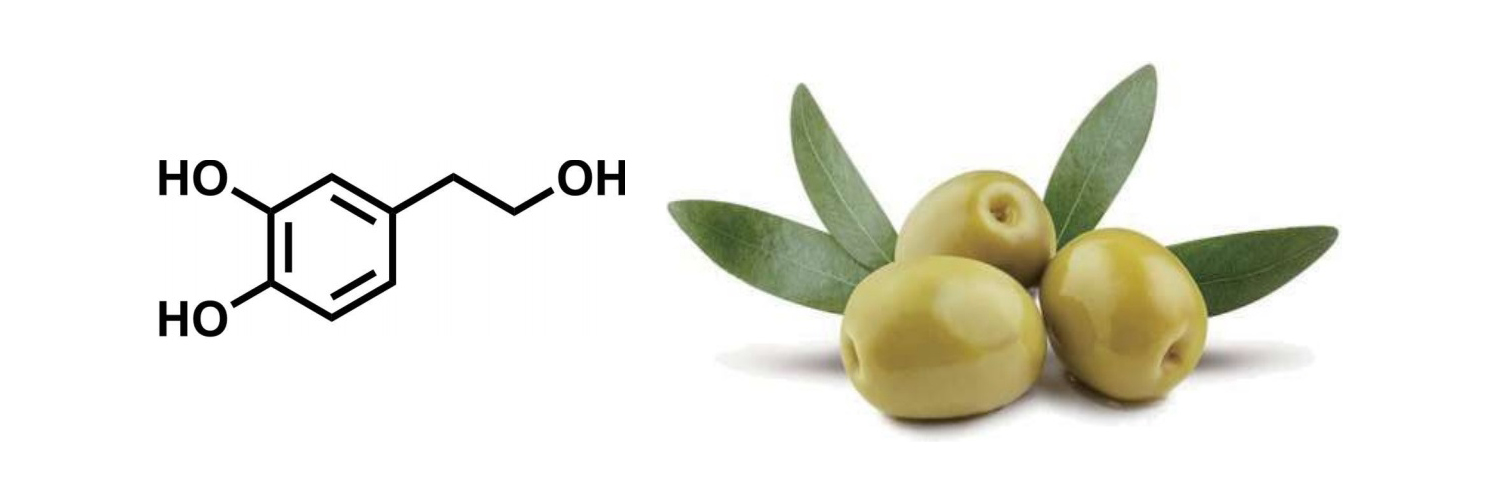In the evolving landscape of skincare and cosmetic science, natural compounds are increasingly preferred due to their safety, efficacy, and biocompatibility. Among these, biosynthetic α-Bisabolol has emerged as a highly versatile ingredient, bridging the gap between sustainability and performance. Unlike conventional extraction methods from chamomile or other botanical sources, biosynthetic production offers a reliable and eco-friendly pathway for large-scale applications. In this blog post, Viablife, a high purity cosmetic raw materials manufacturing factory, will share the role of biosynthetic natural alpha bisabolol in skincare, its advantages, applications, etc.
Understanding Biosynthetic Natural α-Bisabolol

Biosynthetic natural α-Bisabolol (CAS No.: 515-69-5) is produced using engineered microbial fermentation. It has the chemical formula C15H26O, a molecular weight of 222.37 g/mol, and appears as a colorless or straw-yellow mucous liquid, making it highly suitable for incorporation into various cosmetic and pharmaceutical formulations. This biosynthetic approach ensures precise control over purity, yield, and consistency, meeting high-quality industrial standards while minimizing environmental impact.
Role of Biosynthetic α-Bisabolol in Skincare Formulations
Formulators increasingly turn to biosynthetic α-Bisabolol for its gentle and multi-functional properties. It integrates seamlessly into creams, serums, and oils due to its solubility in both polar and non-polar mediums. Importantly, its biosynthetic origin allows for a consistent profile of active compounds, which is critical for reproducible product performance in anti-inflammatory, soothing, and conditioning applications.
In addition, biosynthetic α-Bisabolol exhibits compatibility with a wide range of other actives, including vitamins, peptides, and antioxidants. This adaptability enables skincare chemists to design innovative formulations that go beyond traditional calming products.

Applications and Efficacy of α-Bisabolol
α-Bisabolol is widely applied in multiple personal care and oral care fields due to its excellent soothing and repairing properties.
In soothing and repairing products (e.g., microneedle post-operative essence, ceramide compound cream), it primarily calms post-treatment skin irritation, reduces redness and swelling, and enhances the skin' s barrier function alongside ceramides, accelerating the repair of damaged skin.
For baby care items (e.g., diaper rash repair cream, sensitive skin shower gel), it gently relieves diaper rash-induced redness and discomfort, soothes the baby' s delicate, easily irritated skin, and maintains skin moisture without causing irritation.
In scalp anti-inflammatory products (e.g., seborrheic dermatitis shampoo), it alleviates scalp inflammation triggered by seborrheic dermatitis, reduces itching and scaling, and creates a mild, non-irritating scalp environment.
For men's grooming (e.g., after-shaving soothing gel), it soothes post-shave skin redness, burning, and tightness, repairing tiny cuts from shaving and restoring skin comfort.
In oral mucosal repair (e.g., ulcer patch matrix), it acts as a protective barrier on ulcer surfaces, reduces pain caused by food or saliva stimulation, and promotes the regeneration and healing of damaged oral mucosal tissue.
Comparing Biosynthetic and Plant-Derived α-Bisabolol
A critical discussion within the cosmetic industry involves the comparison of biosynthetic versus plant-derived α-Bisabolol. Both forms share the same molecular structure and functional properties, yet biosynthetic production offers several strategic advantages. Key benefits include controlled purity, reduction of allergenic plant impurities, and scalability to meet industrial demand.
Safety Profile and Regulatory Considerations
One of the appealing aspects of biosynthetic natural α-Bisabolol is its favorable safety profile. Extensive testing has shown it to be non-irritating, non-sensitizing, and compatible with long-term topical use. Additionally, its biosynthetic route simplifies regulatory approval for international markets, as it avoids potential pesticide residues or contaminants sometimes associated with plant-derived extracts. This makes it a reliable choice for global brands aiming for compliance and transparency.
Innovative Trends in Formulation
Recent research explores the synergistic potential of biosynthetic α-Bisabolol with other bioactive molecules. For example, combining it with liposomal vitamin C or encapsulated peptides can enhance skin absorption and efficacy. Such innovative formulations demonstrate that biosynthetic production does not merely replicate the natural compound but enables cutting-edge product development.
Conclusion
From a scientific and commercial standpoint, biosynthetic natural α-Bisabolol exemplifies the intersection of natural efficacy and modern technology. Its versatility, sustainability, and safety make it an ideal candidate for contemporary skincare and therapeutic applications. By embracing biosynthetic approaches, brands can provide high-performance formulations while aligning with ecological and ethical values, demonstrating that innovation and nature can coexist harmoniously.





 Leave a Message
Leave a Message